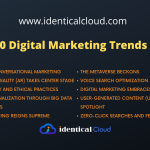What is Greenwashing? And How to Use Analytics to detect it?
What is Greenwashing? And How to Use Analytics to detect it?
In an era of growing environmental awareness, businesses are increasingly embracing sustainability as a selling point. While genuine efforts to reduce environmental impact are commendable, some companies engage in a deceptive practice known as “greenwashing.”
In this blog, we will explore what greenwashing is, why it matters, and how analytics can help detect and expose such misleading claims.
What is greenwashing?
Greenwashing is a term used to describe the practice of making false or misleading claims about the environmental benefits of a product, service, or company. Greenwashing can take many forms, such as:
- Using vague or unsubstantiated environmental claims: For example, a company might claim that its products are “eco-friendly” or “sustainable” without providing any specific evidence to support these claims.
- Using misleading labels or certifications: For example, a company might use a green label on its products, even though the products do not meet the standards of an accredited environmental certification program.
- Highlighting minor environmental benefits while ignoring major environmental impacts: For example, a company might emphasize the fact that its products are recycled, even though the manufacturing process is highly polluting.
Greenwashing is a problem because it can mislead consumers into thinking that they are making sustainable choices when they are not. It can also give companies an unfair advantage over competitors that are genuinely committed to environmental responsibility.
The Deceptive Mask of Greenwashing
Greenwashing is the act of misleading consumers about the environmental practices or sustainability of a company or its products. It involves presenting a greener, more environmentally friendly image than the reality, often to boost sales and reputation. Greenwashing can take various forms, including false advertising, vague or ambiguous claims, or selective use of information.
Greenwashing is harmful for several reasons:
- Consumer Deception: It misleads consumers who genuinely want to support eco-friendly products and businesses.
- Undermining Legitimate Efforts: Genuine eco-friendly companies may face skepticism due to the prevalence of greenwashing.
- Stifling Progress: Greenwashing discourages companies from making real sustainability efforts, as they can gain the appearance of sustainability without taking meaningful action.
How to use analytics to detect greenwashing
Identifying greenwashing can be challenging, as it often involves parsing through complex and sometimes intentionally obfuscated information. This is where analytics comes into play. By leveraging data and analytical tools, we can uncover discrepancies and inconsistencies in a company’s sustainability claims. Here’s how to use analytics to detect greenwashing effectively:
1. Data Transparency and Audit Trails
Analytics relies on data, so the first step is to ensure that companies are transparent about their data. Analyze the data trail to see if there are any gaps or inconsistencies. Genuine sustainability efforts will have a clear and comprehensive data trail, while greenwashing attempts may lack this.
2. Benchmarking and Comparative Analysis
Analytics allows for benchmarking a company’s environmental claims against industry standards and competitors. If a company’s sustainability metrics significantly deviate from industry norms, it may raise red flags. Comparative analysis helps identify outliers and potential greenwashing.
3. Trend Analysis
Tracking a company’s sustainability performance over time is another valuable tool. A sudden, dramatic improvement in environmental metrics may suggest greenwashing. Genuine sustainability efforts usually involve gradual improvements.
4. Natural Language Processing (NLP)
NLP techniques can be used to analyze the language in sustainability reports, advertisements, and press releases. Look for vague or misleading language that may be indicative of greenwashing. NLP can also identify patterns of deceptive communication.
5. Third-Party Verification and Certifications
Analyze whether a company’s sustainability claims are backed by credible third-party certifications or verifications. Legitimate eco-friendly companies often seek such certifications to validate their claims.
6. Consumer Feedback and Social Listening
Use analytics to monitor consumer feedback on social media, review platforms, and forums. Dissatisfied consumers who have uncovered greenwashing may share their findings. Social listening tools can help identify such discussions.
7. Energy and Resource Consumption Analysis
Analyze a company’s energy and resource consumption data. Real sustainability efforts should result in tangible reductions in consumption. If there are no significant changes despite sustainability claims, further investigation is warranted.
The Role of Regulation
While analytics can play a crucial role in identifying greenwashing, it’s essential to recognize that regulation and legal frameworks also have a significant part to play. Government bodies and regulatory agencies are increasingly scrutinizing greenwashing practices and imposing penalties on companies found guilty of deceptive claims.
Greenwashing undermines trust in businesses and hampers genuine efforts to combat climate change and promote sustainability. With the power of analytics and the growing awareness of greenwashing, consumers and stakeholders can hold companies accountable for their environmental claims. By using data and analytical tools to uncover inconsistencies and discrepancies, we can encourage businesses to genuinely embrace sustainable practices and protect the planet for future generations. Remember, true sustainability goes beyond marketing; it requires real commitment and action.







